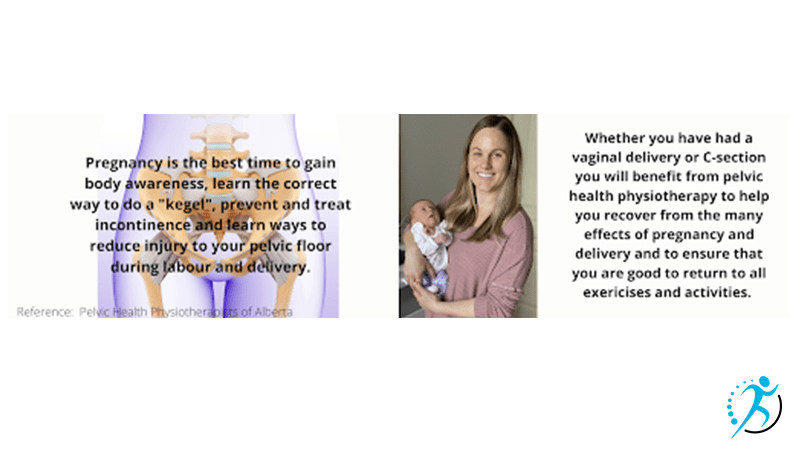
Postpartum Goals: Get your strength and mobility back
Pregnancy is one of the biggest changes a woman’s body will ever go through. Isn’t it remarkable that a woman’s body is able to grow and accommodate a human being?
- muscles expand
- organs shift
- blood volume doubles
All to create space for the tiny human.
This change happens over 40 weeks, but, unfortunately, many women end up living with the after-effects for years!
Once you have had a baby, you are considered postpartum: even if you are a grandmother, you are still considered postpartum.
This is not a negative label, but a record of what your body has done; however, this becomes a problem if you are not able to get your body back to its original capabilities.
We often see women who have not been able to reach their goals or exercise at the same level of intensity as they were before their children – even 10 years later!
This is not about getting back into your size six jeans and rocking a bikini at the beach: this is about getting your strength and your mobility back! Have the freedom to do the activities and exercises you want to do and loved doing pre baby!
What activities do you want to get back to?

- Cross-Fit six times a week
- Run a 10km race
- Walk the dog
- Hike with your partner
Whatever it is, you can achieve it!
During pregnancy and birth, your pelvis expands to accommodate the baby and allow for delivery; we have hormones in our body that allow for this to happen – women are made for this!
So, what happens after delivery? Your hormones don’t switch off like a light switch and your pelvis doesn’t automatically come back to its original size.
This is contrary to what we are told in the media – remember when Kate Middleton was outside the hospital just HOURS after the birth of Prince George, and people were criticizing her for still having a baby bump? Ridiculous!

Our Instagram and Facebook pages are bombarded with women who got their six pack back 3 months after giving birth and doing lunges in their living room holding their baby. For some women this might be totally appropriate; however, for a lot of women it is enough to go for a brisk walk while pushing the stroller, carry their 15lbs baby around and put them in and out of the car 3 times.
With so much contradicting information how do you know what’s right for you?
- Recognize that everyone’s pregnancy, delivery and postpartum states are different – don’t compare yourself to your best friend who gave birth 2 months before you.
- Listen to your body! How do you feel after you do a certain exercise? Did you have pain during or after? Did you have any urinary leakage? Any feelings of heaviness? These are signs that you need to scale back. Did you feel fantastic afterwards? Great! Maybe you can gradually increase the workload.
- Consider how rested you are If your baby is teething and you are sleeping even less than normal, it may not be the best day to try a new sprinting workout.
- Get help! A pelvic floor physiotherapist will assess your movement patterns, strength and mobility to give you strategies to reach your goals.

Common problems for postpartum women:
- weak gluteal muscles
- weaker core
- tight and/or weak pelvic floor
- diastasis
- pain and tension in the neck upper back and forearms
Do any of these issues sound familiar?
What if with the right exercises you could get back to your pre-pregnancy strength – or even better!
The human body is extremely adaptable, but without any load or stress on it, it will get comfortable right where it is. So don’t be afraid to challenge yourself in your postpartum body once you have the right building blocks in place.
We are not meant to stay in that early postpartum state forever. Pelvic floor physiotherapists see a lot of women during their second or third pregnancy or after their second baby whose bodies are not able to cope with as well as it did the first time.
Many of these women were not able to get back to their baseline.
The list of reasons is vast!
- Pain
- no support
- postpartum depression
- lack of resources
- fatigue
- think that this is the new normal
- no time
- fear
………and the list goes on!
Fear is one that is the saddest. Your body grew and gave birth to a tiny human – think of what it is capable of!
With the right guidance, treatment and exercises you can get back to anything you want!
Often there is the fear of leakage, but know that you are not alone in having this fear.
1 in 3 women will have some type of incontinence in their lifetime
1 in 3 makes it extremely common but not normal: ensure that you seek help from a pelvic health physiotherapist who can assess why this is happening and work with you towards a solution. Frequently the solution is not “more Kegels”! Having a full assessment will allow for a customized approach.
At Avenue Physio, all of our therapists have advanced training in assessing lower back and pelvic girdle problems (from the outside).
A pelvic floor physiotherapist is able to assess the outside structures the same way as well as the internal pelvic floor muscles and their function.
If you have no issues with urgency, incontinence, painful intercourse or constipation then booking an assessment with any of our capable physiotherapists is a great way to start
If you do have concerns with any of the above; are pregnant or recently postpartum then a pelvic health assessment would be more appropriate. During a pelvic health assessment we will be able to assess how things have changed since pregnancy and delivery and how you can move forward with confidence!
Pre-Natal
Pelvic health physiotherapy compliments your pre-natal car and can prevent &/or treat:
- Pain in your pubic bone, groin, back, pelvis, buttons, or legs
- Difficulties doing everyday tasts such as rolling over, walking, or getting out of bed
- Leaking urine when you laugh, cough, sneeze, or walk etc
- Bulging or tenting your abdomen when you lift your head off a pillow (abdominal diastasis)
- Pain with intercourse
- Vaginal varicose varicose veins
- Questions about prepping for labour & delivery
Post-Partum
Pelvic health physiotherapy delivery can prevent &/or treat:
- Scarring from c-section, tearing or episiotomy
- Leaking urine, gas, or stool when you cough, sneeze, exercise etc, or not making it to the bathroom in time
- Problems emptying your bladder or bowel completely or frequently
- Pain with intercourse
- Pressure, heaviness, or bulging in your vagina or rectum
- Ongoing pain, in your vagina, rectum, pelvis, pubic bone, abdomen or low back
- Bulging or tenting of your abdomen during exercise

All too often our postpartum clients say; “Why didn’t anyone tell me about this after my first pregnancy?”
Understanding how you can get back to all of the activities you want to do is empowering! You shared your body for 40 weeks – now reward it with care it deserves! ”
Please contact info@fifthavephysio.com if you have any other questions about pregnancy or postpartum treatment!
Or, contact us at 403-234-9004 to book an appointment with one of our accredited Physiotherapists!
FAQ
If you had a healthy pregnancy and a normal vaginal delivery, you can start exercising a few days after giving birth. Start slow with basic abdominal exercises and walking.
If you would like an assessment by a pelvic health physiotherapist you should wait 6 – 8 weeks after your delivery.
What is the best exercise after giving birth?
The first days after you have given birth you can start with easy abdominal and pelvic floor exercises:
- Abdominal exercises: you can do these in many positions – sitting, laying on your back or side or on all 4’s. Pull your tummy in towards your spine. Hold for 5 – 10 seconds. Breathe normally – don’t hold your breath. Repeat 10 times. Repeat throughout the day 3-4 times.
- Pelvic floor exercises: start with laying on your back. Squeeze and lift the muscles around your vagina as if you are trying to stop your ‘pee’. Hold 5 – 10 seconds then relax for 10 seconds. Repeat 10 times.
Start with walking. Start at your own pace and then increase the time and pace and work up to 30 minute daily walks.
Firstly, it can take months to recover after childbirth and every woman is different. Some women bounce back quickly while others take more time.
Your core muscles will be stretched and may be separated called diastasis recti. It is important to first work the deep abdominal muscles first before you start doing any crunches. Start with these crunch free exercises. Starting with level 1 working up to level 4 as you get stronger. Your abdominals should always stay contracted and your low back should not arch.
-
Level 1: Pull your tummy in towards your spine. Hold for 5 – 10 seconds. Breathe normally – don’t hold your breath.
-
Level 2: now add sliding your leg in and out keeping it on the ground.
-
Level 3: when level 2 is easy you make it harder on your abdominals by sliding the leg in and out without touching the ground.
-
Level 4: when level 3 is easy you can make it harder by lifting both legs up then dropping one down at time tapping your heels.
Written by Kayla Skjerdal – Pelvic Physiotherapist
Kayla has experience working with patients with a range of orthopedic concerns including motor vehicle injuries, worker-related injuries, sports injuries, post-fractures, post-surgical, bursitis, tendinitis, muscle sprain/strain, muscle tears, and women’s pelvic health concerns. Kayla is always taking courses every year to stay up to date with the research so that she can provide her patients with the best care possible. Kayla uses a variety of treatment tools such as manual therapy, dry needling, exercises prescription, and education to help her patients reach their rehabilitation goals.
Kayla has a passion for treating women’s pelvic health concerns. She has taken many courses to help treat pelvic floor dysfunctions such as urinary and fecal incontinence, pelvic organ prolapse, pelvic pain, pain with intercourse, and pre and post-partum concerns. She loves empowering women to gain control of their bodies, improve their quality of life, and get back to their activities.

